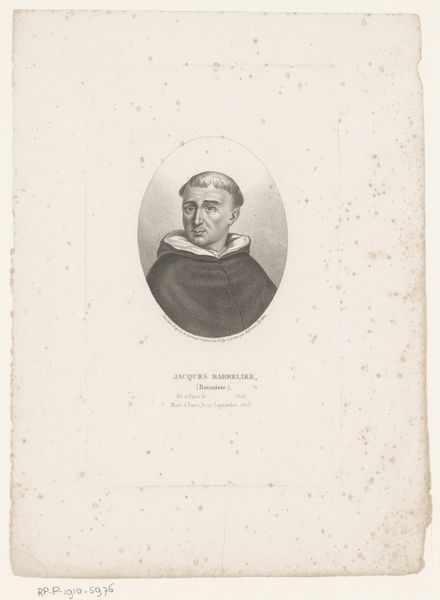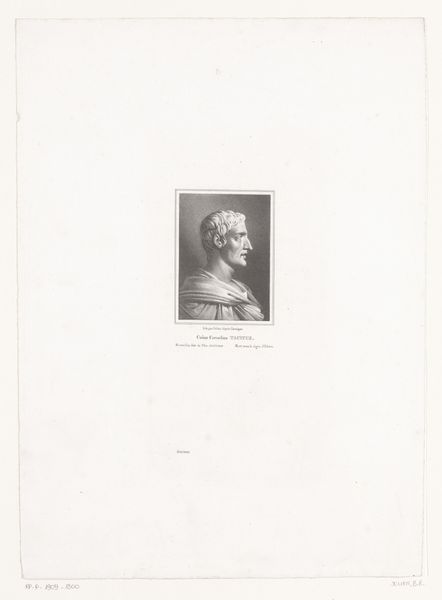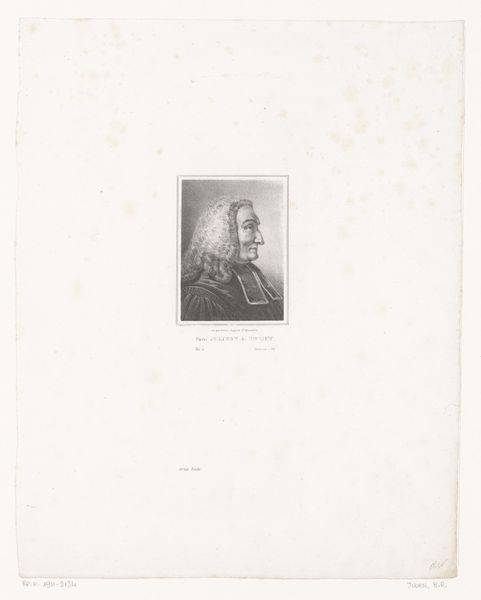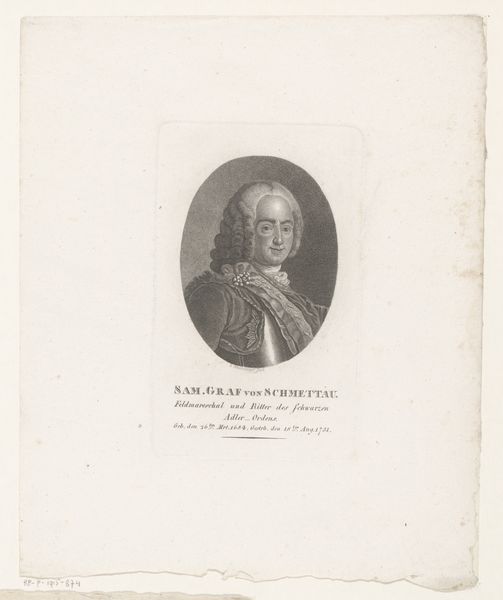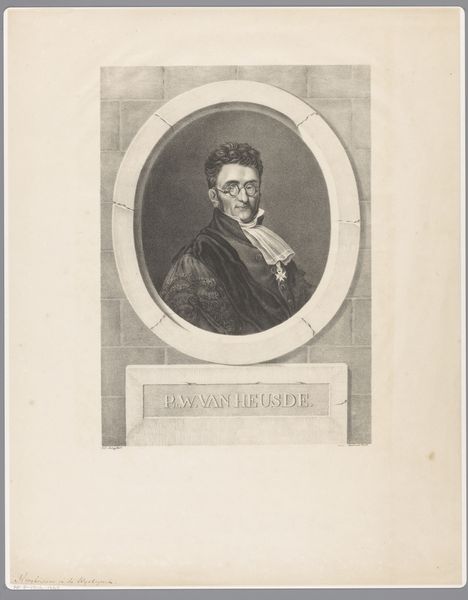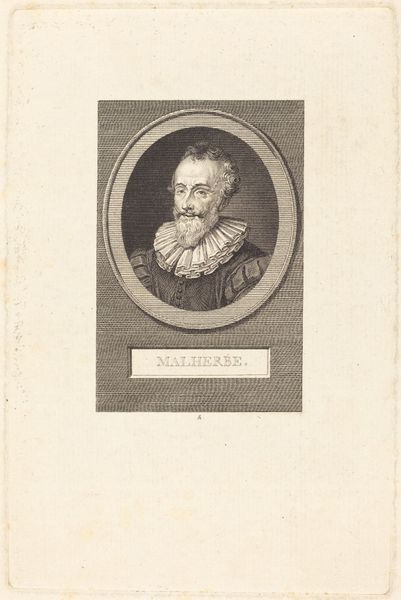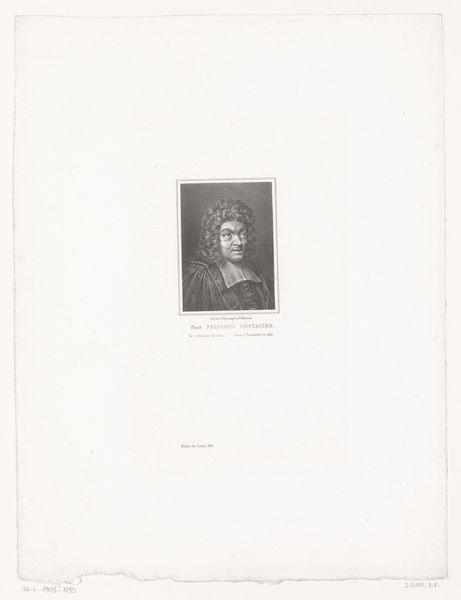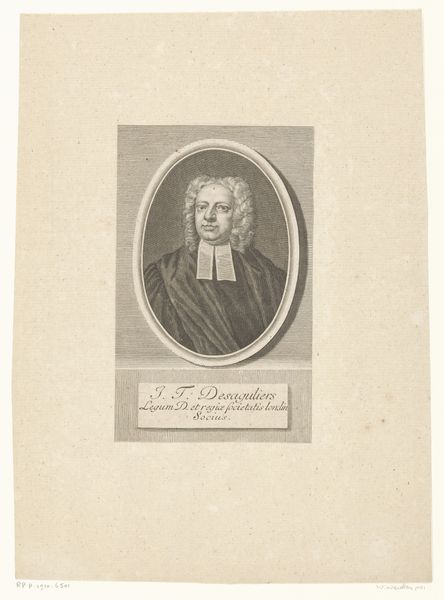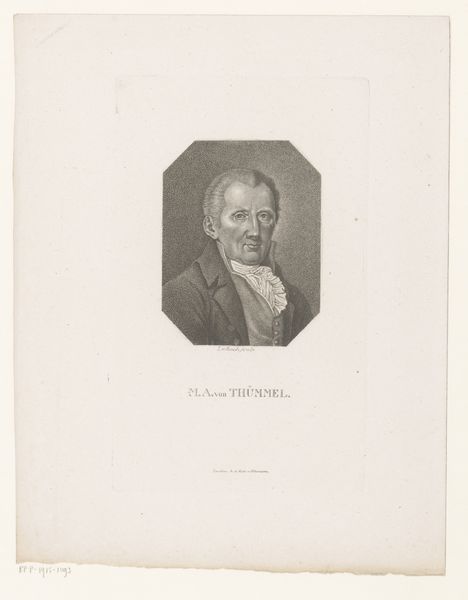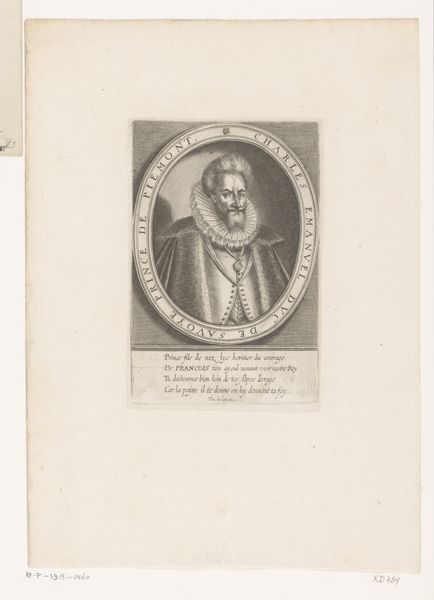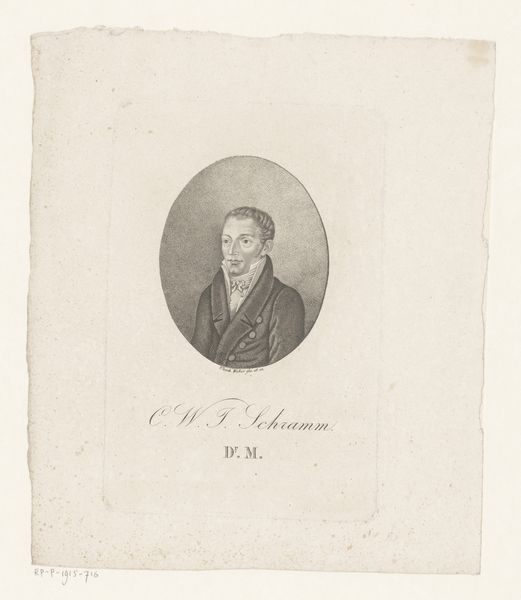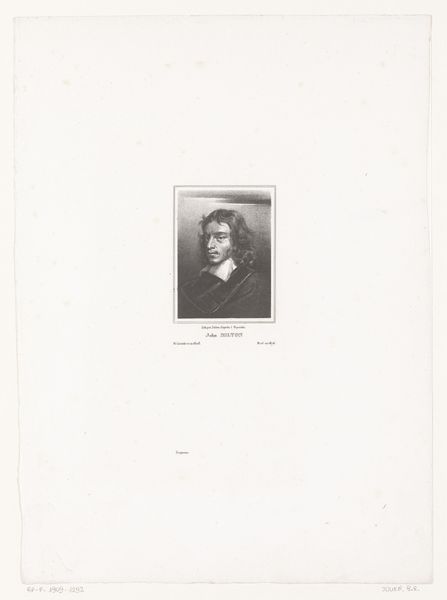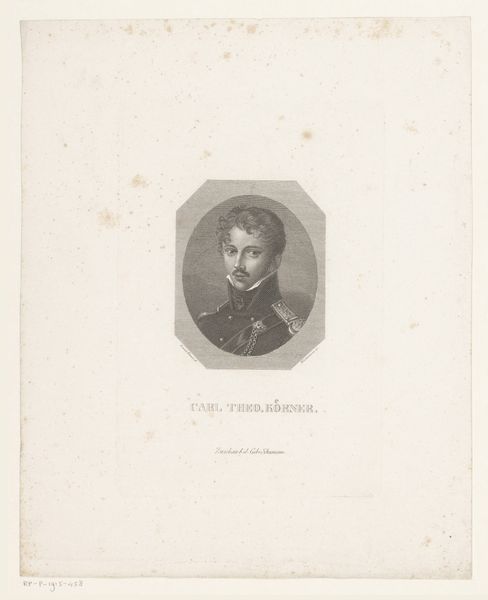
print, engraving
#
portrait
#
16_19th-century
# print
#
engraving
#
realism
Dimensions: height 264 mm, width 172 mm
Copyright: Rijks Museum: Open Domain
Curator: Bernard Romain Julien's "Portret van François de Malherbe," an engraving created around 1830 and now residing here at the Rijksmuseum. A compelling, though austere, image. What's your initial read on it? Editor: Austere is definitely the word. The man’s gaze feels both penetrating and weary. There's an almost unsettling lack of warmth; is it merely the formality of portraiture or something more specific to Malherbe’s position? Curator: Observe the detail etched into his features: the furrowed brow, the texture of his beard. It embodies Realism through the rigorous transcription of observable surfaces and textures. Notice the carefully considered placement of the figure, framed but distinctly set back within its architectural parameters. Editor: It seems clear that this meticulous approach serves to enhance Malherbe's air of authority, yes? But what about context? Malherbe was a celebrated poet known for imposing strict rules on French verse. Is this an artistic echo chamber, replicating patriarchal, restrictive conventions on an artistic level? Curator: Intriguing interpretation. I find the stark black-and-white contrast lends an inherent structure, a sort of binary opposition mirroring the stylistic choices that define Neoclassicism, an intellectual frame so close to the 19th century in which this piece was composed. Editor: I do wonder how such portraits reinforce specific power structures by centering certain voices and bodies while actively erasing or marginalizing others. Portraits as tools in the societal architecture. Curator: A potent observation about portraiture. In purely formal terms, the contrast between the dark garments and brilliant white ruff immediately draws the eye, leading to a dynamic tension. Editor: Definitely. This sharp delineation seems indicative of how Malherbe himself might have viewed the world: governed by strict categories and conventions. Though I cannot look past the elitism suggested here. It is the 19th-century ideal of aesthetic order at the service of ideological reinforcement. Curator: Your insights invite consideration beyond mere observation, prompting contemplation about what a portrait like this can, and does, communicate. Editor: Right, for me it's crucial to interrogate the implicit values and power dynamics embedded in these seemingly objective depictions of historical figures.
Comments
No comments
Be the first to comment and join the conversation on the ultimate creative platform.

